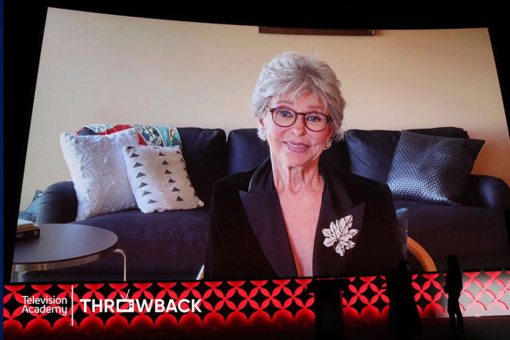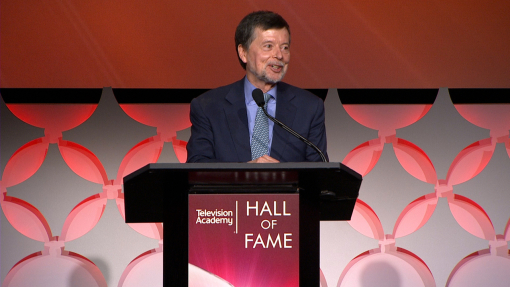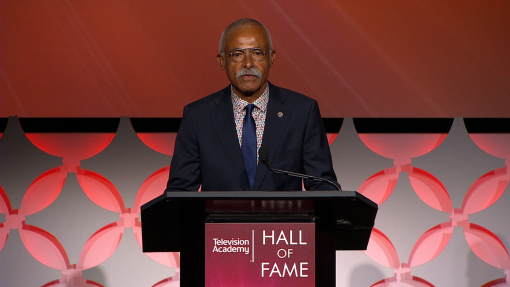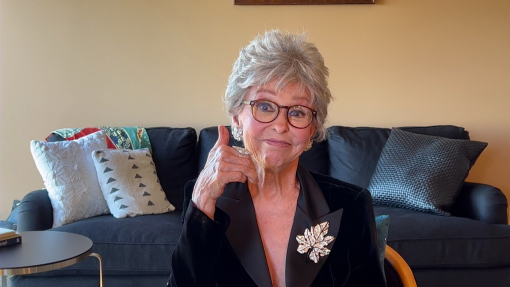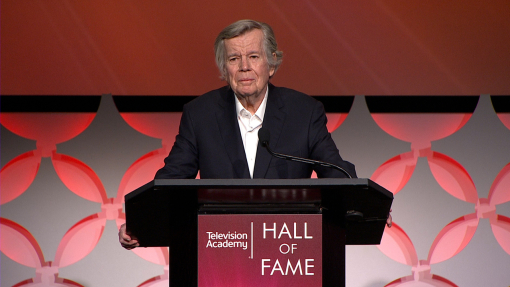“If a man goes into business with only the idea of making a lot of money, chances are he won’t. But if he puts service and quality first, the money will take care of itself. Producing a first-class product that is a real need is a much stronger motivation for success than getting rich.” — Joyce C. Hall
He wasn’t an actor or a newscaster or a comedian. He didn’t earn his keep as a scriptwriter or a television producer. And he never founded a network. Joyce Clyde Hall, however, was one of the most influential men in television. He founded Hallmark Cards, Inc., which in turn founded television’s durable and most distinguished playhouse, the Hallmark Hall of Fame.
Joyce Hall, a farmer’s son from Nebraska, was television’s premier arts patron.
Celebrating its 34th year of production in 1985, the Hallmark Hall of Fame has been hailed by the public and critics alike as the most consistently outstanding dramatic series in television. Winner of 49 Emmys, more than any other show in television, Hall of Fame has produced 117 teleplays, including Abe Lincoln in Illinois, St. Joan, Hamlet, The Little Foxes, Born Yesterday, Peter Pan, The Court Martial of George Armstrong Custer, The Man Who Came to Dinner, and The Marva Collins Story.
“We were convinced that the American public was more interested in quality than some people in television realized,” Hall once said. “We were also convinced that the average American did not have the mind of a twelve-year-old, which many people seemed to feel. We didn’t set out to get the largest audience on TV — we wanted the best.’’
Born August 29, 1891, in David City, Nebraska, Hall founded his card company in 1910, when he started wholesaling postcards out of his room at the Kansas City YMCA. When the hotel management complained about the volume of mail arriving for him, he moved to larger offices. Twelve years later, when his company was firmly established in Kansas City, Hall began sending his salesmen to cover every state in the union.
In 1938, against the advice of advertising agencies, Hall decided to involve his company in the broadcast media by advertising its greeting cards on Tony Wons’ Radio Scrapbook, which aired on Chicago radio station WMAQ. Wons read sentiments from Hallmark cards and, at the end of each program, asked his listeners to “look on the back for the identifying mark — a Hallmark card.’’ The advertising ploy worked. Hallmark sales flourished — and continued to flourish after Wons’ show shifted to network radio in 1940.
In 1944, when Hallmark Cards was 34 years old, radio listeners first heard the slogan that was to become the company’s byword: “When You Care Enough to Send the Very Best.”
Seven years later, Hallmark began sending its very best to America’s newest advertising medium: television. In 1951, the company sponsored a 15-minute weekly interview show called Hallmark Presents Sarah Churchill. In December of that year, Hallmark decided to take on a more ambitious project, the Hallmark Hall of Fame.
Born as the Hallmark Television Playhouse before its name change three weeks later, the first Hall of Fame program offered the world premiere of Gian Carlo Menotti’s opera, Amahl and the Night Visitors, which was telecast over NBC on Christmas Eve 1951. The opera and the Hall of Fame were instant hits. The first opera ever commissioned for television, Amahl, which later enjoyed numerous additional productions and repeats on the Hall of Fame, also made television history in 1953 as the first sponsored network show produced in color. The opera’s second TV production aired on NBC just two days after the Federal Communications Commission approved the RCA tricolor tube that would be compatible with the existing black-and-white sets on the market.
During the summer of 1952, Hall approved another television sponsorship, the Hallmark Summer Theater, which aired on NBC from July 6 to August 31 of that year. Focusing on the plight or the crisis of a single individual, the Summer Theater dramas were experimental in that they employed theater-in-the-round techniques with a minimum of props, suggesting time periods ranging from the American Revolution to the present day. The half-hour show didn’t evoke the same critical or popular acclaim accorded the Hall of Fame shows.
In the meantime, the Hall of Fame continued to make television history. In 1953, its production of Hamlet became in one stroke the first Shakespeare play aired on television, the medium’s first use of the spectacular concept (now termed the television special), and TV’s first two-hour show.
Later, Hall decided to buy television time only when his company needed it the most — shortly before the major selling seasons. Told that the industry would never accept such an arrangement on a permanent basis, Hall found one network, NBC, that was willing to accommodate his company. In 1959, when Hallmark’s production of The Tempest became one of television’s top ten shows (watched by a total audience of 40 million), the arrangement was deemed to have been successful.
“I’ve been quoted a number of times as saying I don’t worry about ratings,” Hall said in his autobiography, When You Care Enough. “That’s not altogether true. I do worry about ratings, but I worry more about the show. I’d rather hold the attention of 25 million people than just ‘reach’ 50 million.”
The Hallmark Hall of Fame, however, has done more than merely hold the viewing public’s attention. To use Sylvester (Pat) Weaver’s phrase, the Hall of Fame has offered its audience “enlightenment through exposure” in such plays as Little Moon of Alban, starring Julie Harris and Christopher Plummer, which won four Emmys in 1958 — more single television awards than any previous dramatic show. Other Hall of Fame highlights include Victoria Regina, with Harris and Basil Rathbone; The Magnificent Yankee, with Alfred Lunt and Lynn Fontanne, which won five Emmys; and the 1960 presentation of Macbeth, Hallmark’s seventh Shakespeare production, which walked away with six Emmys.
Moreover, the Hall of Fame has achieved a reputation for addressing social issues that many sponsors prefer to avoid. In 1969, Hallmark underwrote the production of Teacher, Teacher, an original play about a mentally retarded boy emerging from his isolation through the encouragement of his teacher, portrayed by David McCallum. Playing the central role was fourteen-year-old Billy Schulmann, himself mentally handicapped.
The Maria Collins Story (1981), starring Cicely Tyson, Emily, Emily (1977), and Lisa, Bright and Dark (1973) are among the other Hall of Fame productions that challenged the viewing public with their dramatizations of important social issues. The Hallmark Hall of Fame received its most recent recognition in January, when a special exhibit at the Museum of Broadcasting in New York honored it.
Like the television playhouse he founded, Hall was a man devoted to quality. Because he launched an entire industry, he was often believed to have invented the greeting card. “The ancient Egyptians sent greetings on papyrus,” he noted in his autobiography, “and the Apostle Paul began his letters [with] ‘grace to you and peace!’ ”
Joyce Clyde Hall, the man who sent his very best to television, offering it grace and enduring quality, died in 1982 at the age of 91.
This tribute originally appeared in the Television Academy Hall of Fame program celebrating Joyce C. Hall's induction in 1985.

